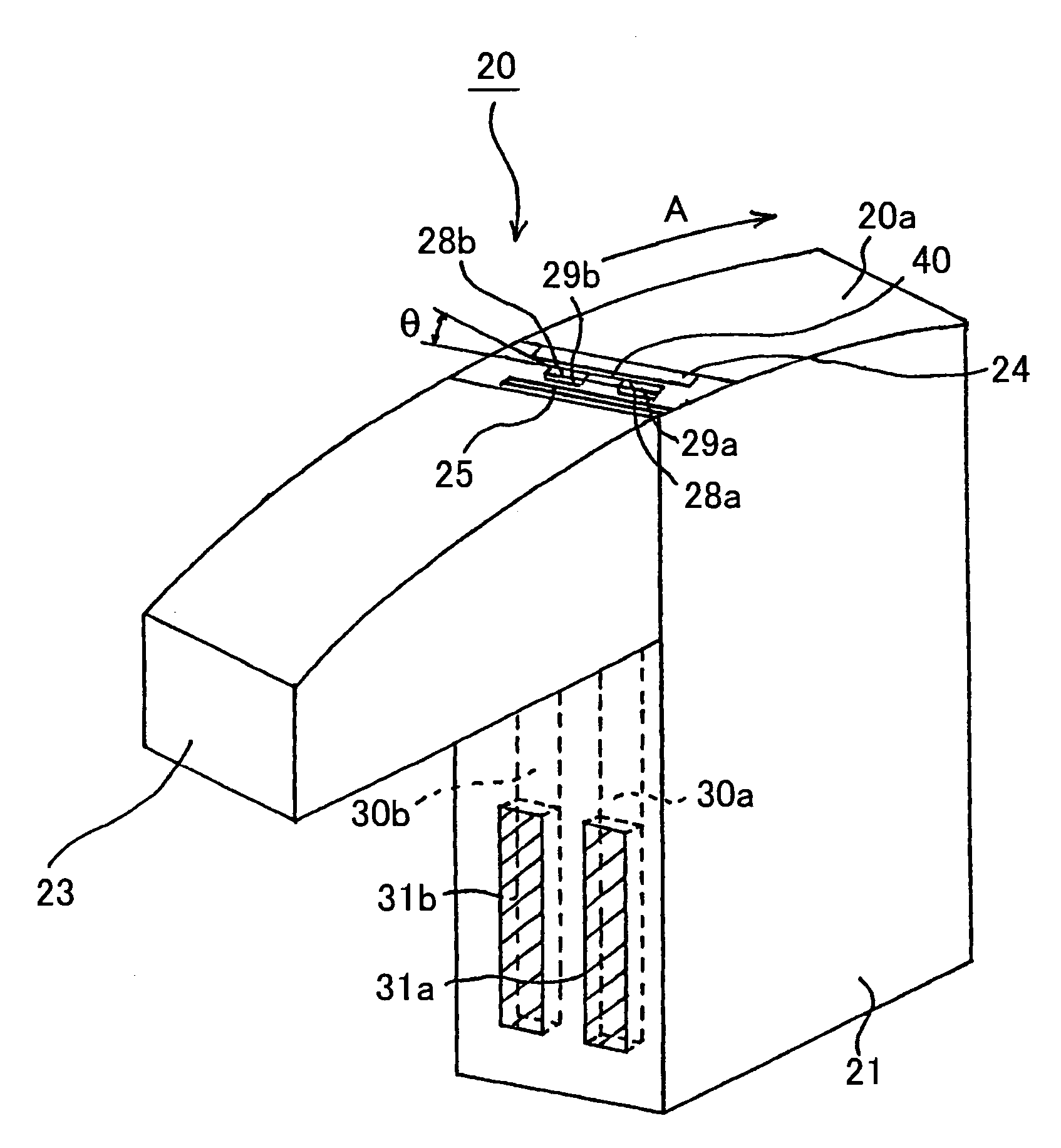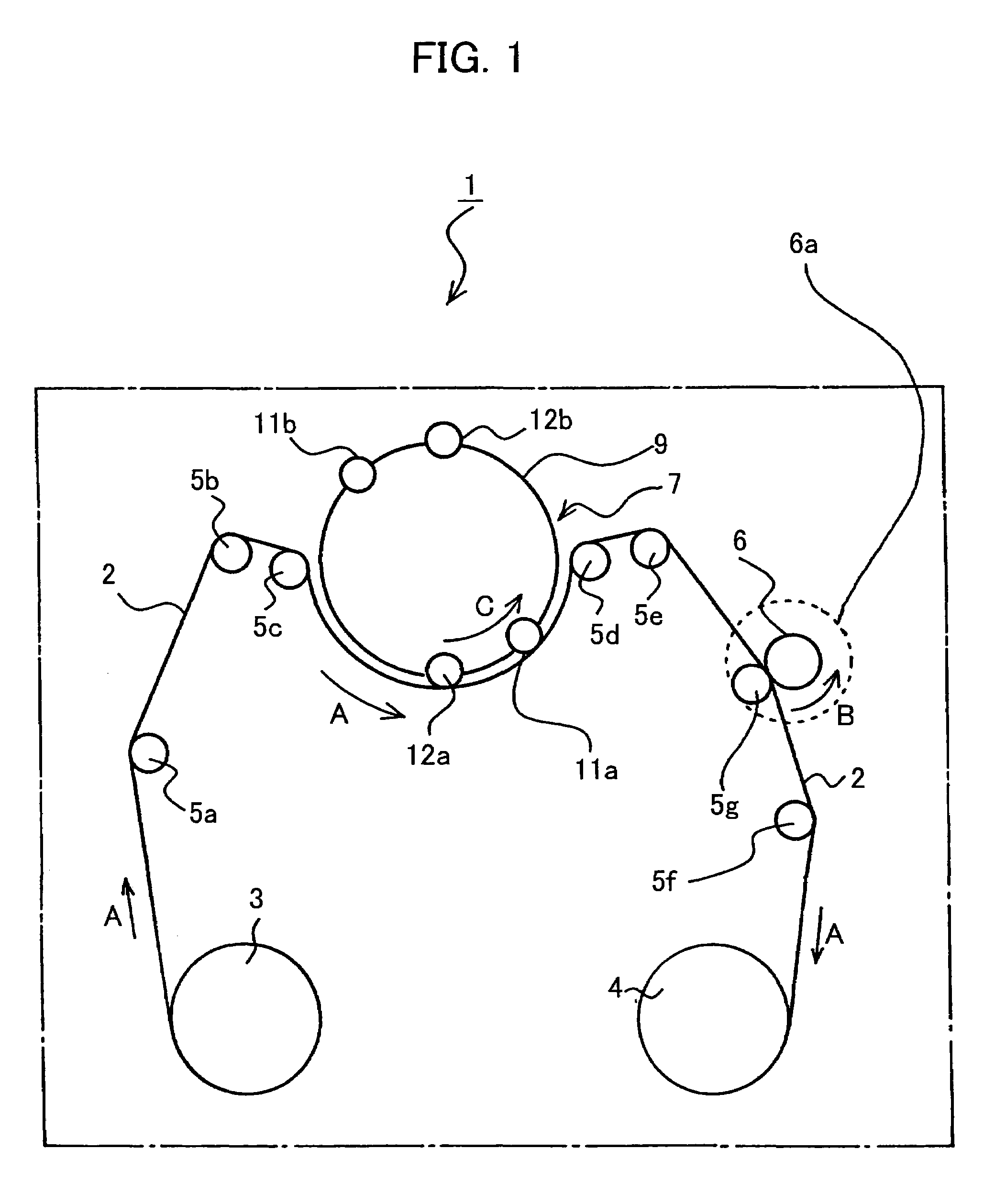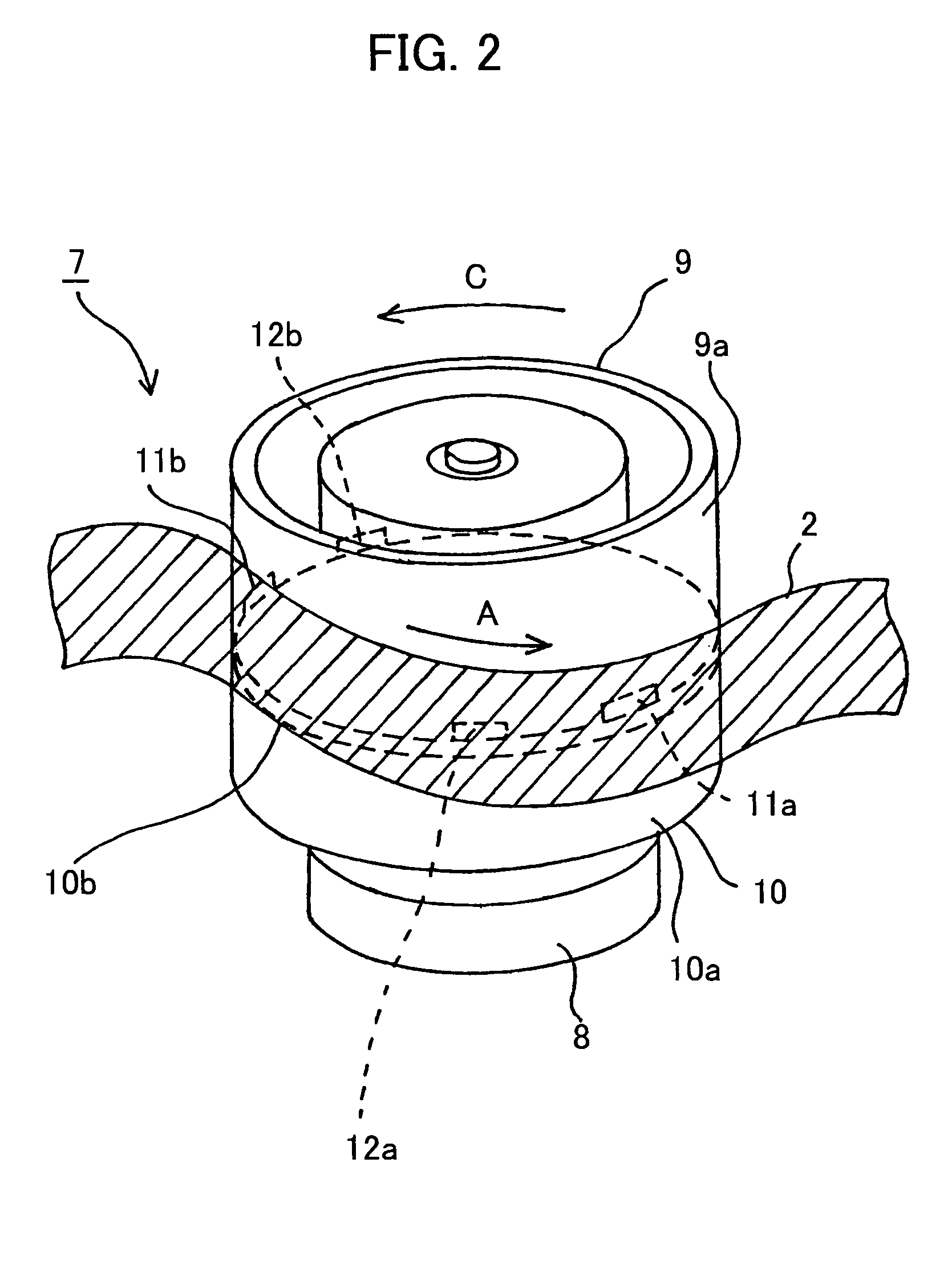Magnetic recording/reproducing apparatus using a GMR head
a recording/reproducing apparatus and gmr head technology, applied in the field of magnetic recording/reproducing apparatus, can solve the problems of reducing the recording/reproducing characteristics of short wavelength recording/recording head, affecting the effect of magnetic head saturation, and reducing noise. , the effect of preventing the saturation of the magnetic head
- Summary
- Abstract
- Description
- Claims
- Application Information
AI Technical Summary
Benefits of technology
Problems solved by technology
Method used
Image
Examples
examples
[0236]Next, a magnetic recording / reproducing apparatus related to the present invention will be described through specific examples. In the examples given below, specific materials and numerical values are given, but it should be obvious that the present invention is not limited to these materials or numerical values.
experiment a
Example A1
[0237]A magnetic tape was prepared as follows.
[0238]A polyethylene terephthalate film of a thickness of 10 μm and a width of 150 mm was prepared as a non-magnetic substrate. On the surface of this film, water-soluble latex containing acrylic ester as its main component was applied to form a primer layer so that the density of fine dents and bumps would be 10,000,000 / mm2.
[0239]Then, a Co—O type metal magnetic thin film of a thickness of 40 nm was formed by vacuum deposition. Film-forming conditions were as follows:
(Film-Forming Conditions)
[0240]Degree of vacuum during vacuum deposition: 7×10−2 Pa
[0241]Ingot: Co
[0242]Incident angle: 45° to 90°
[0243]Gas fed: Oxygen gas
[0244]After the metal magnetic thin film was formed, a protective layer comprised of a carbon film of a thickness of about 10 nm was formed through sputtering or CVD. Then, on the surface of the non-magnetic substrate opposite the surface on which the metal magnetic thin film was formed, a back coat layer compri...
examples a2
to A6, Comparative Examples A1 and A2
[0247]Residual magnetization (Mr) was controlled by adjusting the amount of introduced oxygen during vacuum deposition of the metal magnetic thin film and by adjusting the period of time over which the magnetic tape was left in the atmosphere after the formation of the metal magnetic thin film, thereby varying the product (Mr·t) as shown in Table 1.
[0248]As for the other conditions, the sample magnetic tapes in these examples were obtained in a similar manner as example A1 above.
[0249]Measurements of electromagnetic conversion characteristics were taken with respect to the sample magnetic tapes thus prepared in examples A1 through A6 and comparative examples A1 and A2.
[0250]More specifically, a modified 8-mm VTR was used. Information signals were recorded on each of the sample tapes at a recording wavelength of 0.4 μm. Then, reproduced output, noise level, and S / N ratio were measured using the shield type GMR head 20.
[0251]The various conditions ...
PUM
| Property | Measurement | Unit |
|---|---|---|
| residual magnetization Mr | aaaaa | aaaaa |
| corrosion potential | aaaaa | aaaaa |
| mean roughness Rz | aaaaa | aaaaa |
Abstract
Description
Claims
Application Information
 Login to View More
Login to View More - R&D
- Intellectual Property
- Life Sciences
- Materials
- Tech Scout
- Unparalleled Data Quality
- Higher Quality Content
- 60% Fewer Hallucinations
Browse by: Latest US Patents, China's latest patents, Technical Efficacy Thesaurus, Application Domain, Technology Topic, Popular Technical Reports.
© 2025 PatSnap. All rights reserved.Legal|Privacy policy|Modern Slavery Act Transparency Statement|Sitemap|About US| Contact US: help@patsnap.com



